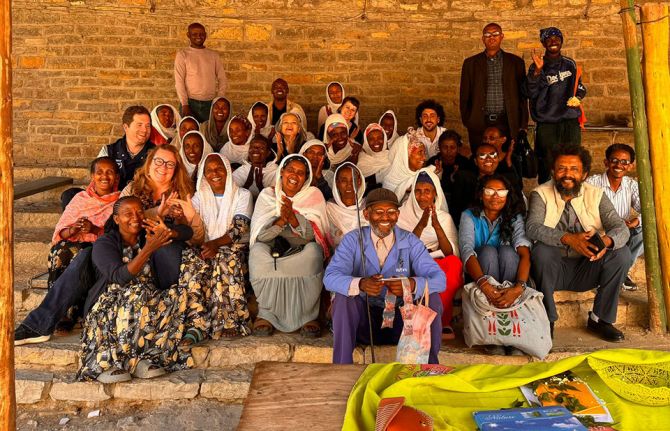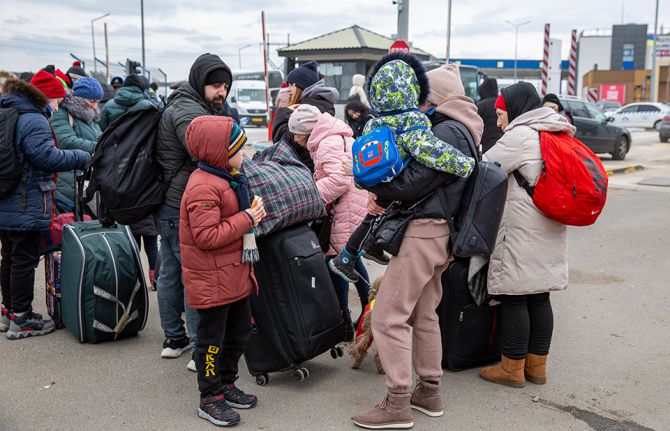
Feature Story
HIV in humanitarian crises : Opportunities and challenges
12 August 2009
12 August 2009 12 August 2009
The relationship between humanitarian crises and HIV was the key issue, at a satellite session sponsored by UNHCR and UNAIDS at the 9th International Congress on AIDS in Asia and the Pacific. Credit: UNAIDS/O.O'Hanlon
With millions of people around the world forced to move by conflict and natural disasters, examining the relationship between humanitarian crises and HIV is becoming increasingly critical. This key issue, and its implications for Asia, was highlighted in a satellite session at the 9th International Congress on AIDS in Asia and the Pacific sponsored by the United Nations High Commissioner for Refugees (UNHCR) and the Joint United Nations Programme on HIV/AIDS (UNAIDS).
The connection between humanitarian crises and the HIV epidemic is not straightforward. Emergencies can increase vulnerability to HIV transmission but this does not necessarily result in increased risk behaviors or higher HIV prevalence. People facing conflict or natural disasters often lose their source of income and some may have to resort to high-risk behaviour to meet their basic needs. Social and sexual norms can break down and women can be especially vulnerable as an increase in rape is often associated with conflict and with displacement. However, humanitarian crises can play a protective role, as population mobility is sometimes curtailed and access to quality health and other social services can be improved, especially in long-term displacement.
During the session, Opportunities and challenges in addressing HIV amongst diverse humanitarian populations, panellists working with displaced people or in other humanitarian contexts explored these vexed questions. They also argued that in every instance where a humanitarian crisis occurs, whether in a high or low prevalence setting, minimum interventions to prevent HIV and respond to it are necessary.
The aim of the meeting was to increase awareness of the HIV epidemic among key stakeholders, encouraging them to ensure that humanitarian populations have access to prevention, treatment, care and support services, whatever their situation. The panel and participants were also keen to exchange ideas and expertise, lessons learned, challenges faced and successes achieved in HIV programmes in humanitarian settings in the Asia region, with the aim of developing and strengthening partnerships between relevant actors in the field.
Speakers at the session were set to explore a wide range of ideas and information. Presentations included: an overview of the epidemiology and programmatic principles of HIV in conflict and experience to date in the Asia region; integrating HIV into China’s disaster response scenario; successes and challenges in HIV programmes among Afghan injecting drug users living as refugees in Pakistan; and treatment programmes in stable refugee settings in Thailand.
UNHCR is the lead UN agency for addressing HIV among refugees and people internally displaced as a result of conflict. It aims to ensure access to comprehensive programmes relating to HIV prevention, including prevention of mother-to-child transmission, voluntary counseling and testing, development and dissemination of information-education-communication materials, care, support and treatment and monitoring and evaluation.
HIV in humanitarian crises : Opportunities and ch
Cosponsors:
Feature stories:
Addressing the HIV-related needs of “people on the move” (19 June 2009)
UNHCR reflects on progress and remaining challenges on World AIDS Day (02 December 2008)
Publications:
UNESCO and UNHCR publication “Educational Responses to HIV and AIDS for Refugees and Internally Displaced Persons: Discussion Paper for Decision Makers” (pdf, 820.8 Kb.)
Strategies to support the HIV-related needs of refugees and host populations: A joint publication of the Joint United Nations Programme on HIV/AIDS (UNAIDS) and the United Nations High Commissioner for Refugees (UNHCR) UNAIDS Best Practice Collection
HIV-related needs in Internally Displaced Persons and other conflict-affected populations: A rapid assessment tool. (pdf, 612 Kb.)
Policy Brief: HIV and Refugees (pdf, 267.5 Kb.)
The need for HIV/AIDS interventions in emergency settings (pdf. 335.7 Kb.)



